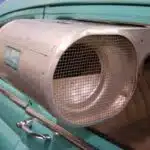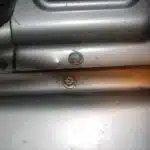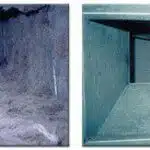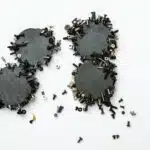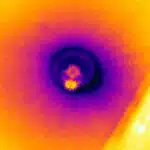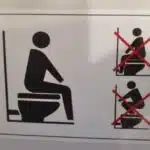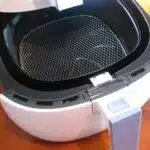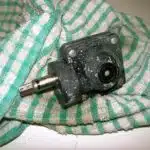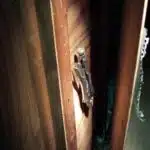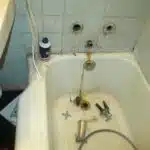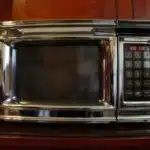The air conditioner is an essential component of any modern home. It provides comfort and relief from the heat, especially during the summer months. However, like any other appliance, air conditioners are prone to wear and tear over time. When this happens, the unit may fail to function optimally or even stop working altogether. As a qualified HVAC technician with years of experience in repairing home air conditioners, I have created this guide to help homeowners diagnose and repair common issues that affect their units.
Repairing a home air conditioner can be a daunting task for some homeowners, but with the right tools and knowledge, it can be done successfully. This article will cover common issues such as refrigerant leaks, faulty electrical connections, clogged filters, and other issues that may cause your unit to malfunction. By following the steps outlined in this guide, you can save money on costly repairs and ensure that your home remains comfortable all year round. So whether you’re a seasoned DIYer or someone who’s never picked up a wrench before, this article will provide you with the necessary information to repair your home air conditioner quickly and efficiently.
Safety Precautions To Take Before Starting Repairs
As an HVAC technician, I cannot stress enough the importance of taking safety precautions before attempting to repair a home air conditioner. Neglecting these precautions can lead to serious injuries or even death. Therefore, it is crucial that you take necessary actions to keep yourself safe during the repair process.
One of the most critical aspects of maintaining safety during air conditioning repairs is ensuring proper ventilation. Your home’s air conditioning system is designed to regulate temperature and humidity by circulating air throughout your living space. However, if the air contains harmful chemicals or gases, such as refrigerant or carbon monoxide, then this could pose a significant health hazard. Make sure that your workspace has adequate ventilation by opening windows and doors or using fans. If possible, use a breathing apparatus for added protection.
Another important factor in maintaining safety while repairing an air conditioner is wearing appropriate attire. You should wear long-sleeved shirts and pants to protect your skin from exposure to harmful substances such as refrigerant or electrical wires that might cause burns, cuts, or abrasions. Additionally, you should wear gloves and shoes with non-conductive soles to reduce the risk of electric shock.
Understanding how your home air conditioner works is essential before starting any repairs. By learning about its basic functionality and components, you will be better equipped to diagnose and fix problems when they arise. With this knowledge in mind, let us proceed to the next section on understanding how your air conditioner works.
Understanding How Your Air Conditioner Works
- An air conditioner is made up of several components, including a compressor, an evaporator, a condenser, and a metering device.
- The compressor and condenser are typically located inside the outdoor unit, while the evaporator and metering device are typically located inside the indoor unit.
- The compressor is the main component of the air conditioner, responsible for compressing and transferring the refrigerant to the condenser.
- The evaporator is responsible for absorbing heat from the inside of the home, while the condenser is responsible for releasing the heat to the outside of the home.
Parts Of The Air Conditioner
The air conditioner is a complex machine made up of several parts that work together to produce cool air. One of the most important parts of an air conditioner is the compressor, which compresses the refrigerant gas and pumps it through the system. If the compressor is not working properly, it can cause your air conditioner to malfunction or stop working altogether. In such cases, you may need to replace the compressor or call in a professional technician.
Another important part of an air conditioner is the evaporator coil, which removes heat from the indoor air and cools it down using refrigerant. Over time, dust and debris can accumulate on the coil, reducing its efficiency and causing your air conditioner to work harder than necessary. To prevent this from happening, it’s important to clean your evaporator coil regularly using proper techniques recommended by manufacturers or HVAC professionals.
In conclusion, understanding how your air conditioner works requires knowledge about its various parts and their functions. By maintaining these parts properly, you can extend the life of your unit and ensure that it operates efficiently throughout its lifespan. In case of any issues with your air conditioner’s parts like compressor or evaporator coils cleaning techniques contact a professional technician for assistance.
Components Of The Air Conditioner
Understanding the various components of an air conditioner is crucial to its proper maintenance and repair. One of the most common issues with air conditioners is a lack of maintenance, which can lead to frequent breakdowns and expensive repairs. Regular air conditioner maintenance should include cleaning or replacing filters, checking refrigerant levels, and inspecting electrical connections.
Another important component of an air conditioner is the condenser, which is responsible for releasing heat outside the home. If the condenser fails or becomes damaged, it can cause the entire system to malfunction. Common repairs for a faulty condenser include cleaning debris from around the unit or replacing damaged parts.
Lastly, the thermostat plays a critical role in regulating your air conditioner’s temperature and keeping it running smoothly. If your thermostat is not functioning correctly, it can cause your system to work harder than necessary or even shut down completely. Regularly checking and maintaining your thermostat can help prevent these issues and ensure that your air conditioner operates efficiently throughout its lifespan. Remember that proper care and maintenance of all components in your air conditioning unit will keep you comfortable during hot summer months while saving energy costs in the long run.
Identifying Common Issues In Your Ac Unit
As a HVAC technician, I have encountered various issues with air conditioners over the years. One of the most common problems that homeowners face is related to their compressor. The compressor is responsible for compressing refrigerant gas and circulating it through the system to cool your home. If you notice that your AC unit is not cooling properly, then there might be an issue with the compressor. This could be due to low refrigerant levels, faulty wiring, or a malfunctioning motor.
Troubleshooting compressor issues can be tricky and should only be done by a professional technician. However, there are some DIY maintenance tips that homeowners can follow to prevent such problems from occurring in the first place. Regularly cleaning or replacing air filters can improve airflow and reduce strain on the compressor. Additionally, keeping outdoor units clear of debris and vegetation can prevent overheating and premature wear on parts.
In conclusion, identifying common issues with your AC unit is crucial for maintaining optimal performance and preventing costly repairs down the line. By troubleshooting compressor issues and following some simple DIY maintenance tips, you can ensure that your air conditioner runs smoothly throughout the year. In the next section, we will discuss how to check for refrigerant leaks in your AC unit.
Checking For Refrigerant Leaks
- Refrigerant leaks can be detected by a visual inspection of the air conditioner’s components, an electronic leak detector, or a pressure decay test.
- The primary method for repairing a refrigerant leak is by replacing the damaged component, such as the compressor, evaporator, condenser, or lineset.
- If the leak is minor, it can often be sealed using a refrigerant-grade sealant or a mechanical fitting.
- It is important to note that all repairs must meet refrigerant containment and recovery requirements as regulated by the Environmental Protection Agency (EPA).
Detecting Refrigerant Leaks
As a HVAC technician, detecting refrigerant leaks is an essential part of repairing home air conditioners. Refrigerant leaks can cause significant damage to the unit and even pose a risk to those in the surrounding area. Therefore, it is crucial to know how to detect refrigerant leaks effectively.
When checking for refrigerant leaks, one must first check the refrigerant levels in the system. Low levels of refrigerants could indicate a leak somewhere in the unit. Once you have identified low levels of refrigerants, it’s time to start looking for leaks. One way to do this is by using a leak detector that senses gases and alerts you when there’s a leak.
Another way to detect refrigerant leaks is by inspecting the components of the AC unit thoroughly. Check for any signs of oil stains or discoloration on copper tubing, which could be an indication of a leak nearby. Also, inspect all valves and fittings carefully as they may be loose or damaged due to wear and tear over time.
In conclusion, repairing refrigerant leaks is not something that should be taken lightly as it can cause significant damage if left unattended. By detecting refrigerant leaks early on and taking prompt action, homeowners can save themselves from costly repairs down the road. As HVAC technicians, we must remain vigilant when checking for refrigerant leaks and take every necessary step to ensure that our clients’ air conditioning units are running smoothly and efficiently.
Fixing Refrigerant Leaks
After detecting the presence of refrigerant leaks in an air conditioning unit, the next step is to fix them. As HVAC technicians, we must identify the causes of these leaks and determine the appropriate course of action. Common causes of refrigerant leaks include worn or damaged valves, fittings, and tubing. It is also possible for leaks to occur due to poor installation or maintenance practices.
To fix refrigerant leaks, it is essential to first locate the source of the problem accurately. This can be accomplished through a variety of methods, including using a leak detector, inspecting components for oil stains or discoloration, and checking valves and fittings for looseness or damage. Once the source has been identified, repairs can be made. This may involve replacing damaged parts, repairing holes or cracks in tubing, or resealing connections.
Preventing future refrigerant leaks is just as important as fixing existing ones. To do this, it is crucial to perform regular maintenance on air conditioning units and address any issues promptly. Proper installation and use of high-quality components can also help prevent future leaks from occurring. As HVAC technicians, it is our responsibility to educate homeowners on best practices for maintaining their air conditioning units to ensure they continue running smoothly and efficiently for years to come.
Fixing Faulty Electrical Connections
Like the flow of electricity, a home air conditioner needs a clear path to function properly. Faulty electrical connections can disrupt the flow and cause your unit to malfunction. This is why it is important to have a basic understanding of how to fix these connections.
Before attempting any electrical repairs, make sure you have the proper tools needed such as wire strippers, pliers, and electrical tape. Start by turning off the power supply to your AC unit. Then, inspect all electrical connections for signs of wear or damage. Look for loose wires or corroded terminals that may need to be replaced.
If you are unsure about how to fix faulty connections, troubleshooting tips are available online or through HVAC technicians who specialize in air conditioner repair. They can help you identify and resolve the problem quickly and safely. Remember, regular maintenance of your AC unit will help prevent future electrical issues from occurring. In the next section, we will discuss how cleaning or replacing air filters can improve your unit’s overall performance.
Cleaning Or Replacing Air Filters
A clean and efficient air filter is an essential component of every home air conditioning system. With regular use, debris and dust particles can accumulate on the filter over time, obstructing the flow of air into the system. This impedes the cooling process and results in a less comfortable indoor environment. Therefore, it is important to regularly inspect and maintain your air filters.
Cleaning vs. replacing air filters: When it comes to maintaining your AC filters, there are two options: cleaning or replacing them. Cleaning involves removing any accumulated debris from the filter with a vacuum cleaner or washing it with water. On the other hand, replacing requires completely removing the old filter and installing a new one in its place. While cleaning may seem like a cost-effective option, sometimes cleaning cannot restore an old filter to its original efficiency level.
Best practices for maintaining air filter efficiency: To ensure that your AC continues to work efficiently, we recommend adhering to some best practices. These include checking your filters every month, especially during high-use periods. You should replace or clean them when they become dirty or clogged since dirty filters make your AC work harder than necessary and result in higher energy bills. Also, keep in mind that pets release dander that can clog up your system faster.
Moving on to lubricating moving parts – this step is also crucial to keeping your home AC running smoothly and efficiently.
Lubricating Moving Parts
After cleaning or replacing the air filters, it is important to lubricate the moving parts of your home air conditioner. Lubrication ensures smooth and efficient operation of the AC unit by reducing friction between the components. The importance of lubrication cannot be overstated as it plays a significant role in preventing wear and tear on the system.
There are different types of lubricants that can be used for AC maintenance, including oil-based and silicone-based lubricants. Oil-based lubricants are commonly used for older models of air conditioners with metal parts. On the other hand, silicone-based lubricants are suitable for newer models with plastic parts. It is essential to use the right type of lubricant for your specific AC unit to avoid damaging it.
Regularly lubricating your home air conditioner’s moving parts will increase its lifespan and prevent costly repairs in the long run. Neglecting this aspect of maintenance may lead to overheating, which can cause damage to various components in the system. In addition, proper lubrication will reduce noise levels from your AC unit, providing you with a comfortable and peaceful environment in your home.
Now that we have discussed the importance of lubricating moving parts in your home air conditioner let us move on to another crucial step in AC maintenance – checking the thermostat. A malfunctioning thermostat can cause an array of problems with your HVAC system, including inefficient cooling or heating and high energy bills. Therefore, it is crucial to ensure that your thermostat is functioning correctly by regularly checking and calibrating it if necessary.
Checking The Thermostat
To check the thermostat of a home air conditioner, it is essential to start by examining the settings. Ensure that the unit is set to “cool” or “auto” mode and that the desired temperature is selected correctly. If the settings are appropriately adjusted and there seems to be an issue with cooling, then it may be time to replace the batteries.
Batteries play a crucial role in maintaining the efficiency of your air conditioner’s thermostat. When they run low, they can cause inaccurate temperature readings, which ultimately leads to poor cooling performance. Therefore, if you notice that your air conditioner is not functioning correctly, try replacing its batteries first before calling for professional assistance.
Always remember that adjusting settings and replacing batteries are simple tasks that homeowners can handle themselves. However, if these steps do not solve your air conditioner’s problem, do not hesitate to seek professional help from an HVAC technician. These professionals have extensive knowledge of HVAC systems and can diagnose and repair any issues quickly.
Moving on to inspecting the condenser coil, it is essential to note that this component plays a vital role in your air conditioner’s performance. A dirty or clogged condenser coil can significantly affect your system’s efficiency and lifespan. Therefore, you should inspect it regularly to ensure that it remains clean and unobstructed.
Inspecting The Condenser Coil
After checking the thermostat, the next step in repairing a home air conditioner is inspecting the condenser coil. The condenser coil is located outside the home and is responsible for releasing heat absorbed from inside the house. It is important to keep this part clean and well-maintained to ensure optimal functioning of the air conditioner.
Cleaning techniques for the condenser coil include removing any debris, such as leaves or grass clippings, that may be blocking airflow. This can be done using a soft brush or by carefully rinsing with a garden hose. It is important to not use too much pressure when rinsing to avoid damaging delicate parts of the unit. Additionally, regular maintenance tips include trimming any nearby vegetation to prevent it from encroaching on the unit and reducing airflow.
In order to maintain proper functioning of your home air conditioner, it is essential to regularly clean and maintain all components of the system. The evaporator coil is another important part that should be cleaned periodically. In the next section, we will discuss cleaning techniques for the evaporator coil that will help improve performance and extend its lifespan.
Cleaning The Evaporator Coil
It is important to keep the evaporator coil clean as it plays a crucial role in cooling the air. A dirty evaporator coil can cause reduced airflow, which in turn affects the overall performance of the AC unit. To clean the evaporator coil, you will need a few tools such as a coil cleaner, a brush, and gloves to protect your hands.
Before starting the cleaning process, it is recommended to turn off the power supply to the AC unit. Once this is done, remove the access panel by unscrewing it using a screwdriver. The evaporator coil is usually located behind this panel. Use a brush to remove any debris or dust buildup on the coils. Be sure not to use excessive force as this may bend or damage them.
Next, apply a coil cleaner onto the coils and let it sit for about 10-15 minutes so that it breaks down any dirt buildup. After sufficient time has passed, rinse off the cleaner with water while being careful not to wet any electrical components of the unit. Always follow best cleaning practices when dealing with electrical appliances to avoid accidents and damage to equipment. Now that you know how to clean an evaporator coil, let’s move on to unclogging the drain line.
Unclogging The Drain Line
After cleaning the evaporator coil, the next step in repairing a home air conditioner is unclogging the drain line. A clogged drain line can cause water to back up into the air conditioner and damage the unit. To prevent clogs, it is recommended to pour a cup of vinegar or bleach down the drain line every six months.
However, if the drain line is already clogged, there are several home remedies that can be used to unclog it. One method is using a wet/dry vacuum to suck out any debris from the drain line. Another option is using a wire brush or coat hanger to remove any buildup inside the drain line. It is important to note that harsh chemicals should not be used as they can damage the drain pan and other components of the air conditioner.
After successfully unclogging the drain line, it is important to check for any leaks and ensure proper drainage before reassembling the unit. If there are still issues with water buildup or leakage after attempting these remedies, it may be necessary to seek professional assistance or consider replacing certain parts such as the capacitor.
Replacing The Capacitor
Like the heart of a human body, capacitors are an essential component of an air conditioner. The capacitor is responsible for starting the compressor and fan motor. When a capacitor fails, it can cause the air conditioner to stop working or produce warm air. Capacitor troubleshooting is relatively easy as it only requires visual inspection, physical testing, and electrical tests.
If you suspect that your capacitor has failed, you need to replace it immediately. Before replacing a capacitor, make sure that you have all the necessary tools such as needle-nose pliers, wire strippers, and a multimeter. Turn off the power supply and discharge the stored electrical energy in the capacitor by shorting out its terminals with an insulated screwdriver or jumper wire.
To replace a capacitor, remove its cover and disconnect all wires attached to it. Take note of which wire goes where before removing them; otherwise, you might find yourself struggling with rewiring everything back together later on. Install the new capacitor by connecting all wires correctly according to their previous placement. Put back the cover and turn on the power supply to test if your replacement was successful.
After replacing your faulty capacitor, it’s now time to check if your fan motor is still in good condition. Testing the fan motor’s condition is crucial because it can also cause problems when not functioning correctly.
Testing The Fan Motor
To test the fan motor, the technician must first remove the access panel to gain access to the unit’s electrical components. The technician should then turn off the power supply to the air conditioner and use a multimeter to check for voltage. If there is no voltage, it may be necessary to replace a fuse or circuit breaker.
Once voltage has been confirmed, the technician can proceed with testing the fan motor itself. One way to do this is by manually spinning the blade while listening for any unusual sounds. If there is a grinding noise, it could indicate that the bearings need replacing. Another test involves checking the resistance of the motor windings using a multimeter. Any significant deviation from normal readings could indicate a faulty motor.
If all tests show that the fan motor is functioning properly, then other issues may be causing problems with the air conditioning system. These could include issues with refrigerant levels or blocked air ducts. In these cases, it may be necessary to troubleshoot other areas of the system in order to diagnose and fix any underlying problems.
Troubleshooting Other Issues
Aside from the common problems with air conditioners, there are other issues that homeowners may encounter. One of the most common causes of AC malfunction is a dirty filter, which can cause restricted airflow and decreased system efficiency. DIY solutions to this problem include cleaning or replacing the filter regularly. Another issue that may arise is a faulty thermostat, which can cause temperature inconsistencies throughout the home. The best solution for this problem would be to replace the thermostat.
Another issue that homeowners may face is a refrigerant leak. This is a serious problem that requires professional attention, as refrigerant leaks can be harmful to both people and the environment. Common causes of refrigerant leaks include improper installation, punctured lines, or general wear and tear over time. It’s important to address this issue immediately by hiring a professional technician who has experience in repairing refrigerant leaks.
Preventative maintenance is key in preventing these types of issues from arising in the first place. Homeowners should make sure to schedule regular maintenance appointments with a professional technician to ensure that their AC unit is functioning properly and efficiently. Regular maintenance can also help detect potential issues before they become major problems, saving homeowners time and money in the long run.
When all else fails and an air conditioner issue cannot be resolved through DIY solutions or preventative maintenance, it’s time to call in a professional technician for assistance. A trained HVAC technician can diagnose and repair complex issues quickly and efficiently, ensuring that your home stays cool and comfortable all summer long. Don’t hesitate to hire a professional when necessary – it’s worth it in the end!
Hiring A Professional Technician When Necessary
Having successfully addressed other issues with your home air conditioner, it is important to consider the pros and cons of attempting DIY repairs versus hiring a professional technician. While DIY repairs may seem cost-effective, they can often be dangerous and lead to further damage if not done correctly. Additionally, attempting repairs without proper knowledge or tools may void manufacturer warranties.
On the other hand, regular maintenance by a professional technician can provide numerous benefits. Scheduled maintenance allows for early detection and prevention of potential issues, leading to improved efficiency and longevity of the unit. Furthermore, professional technicians possess the necessary knowledge and tools to complete repairs safely and effectively.
Ultimately, while DIY repairs may seem like a quick fix, it is important to weigh the potential risks against the benefits of hiring a professional technician for regular maintenance and repair. By investing in proper upkeep of your home air conditioner, you can ensure optimal performance and avoid costly damages in the long run.
Conclusion
In conclusion, repairing a home air conditioner is a complex task that requires technical knowledge and expertise. Before starting any repair work, it is essential to take proper safety precautions to avoid any accidents. Understanding how your air conditioner works is also important in identifying common issues that may arise.
Once you have identified the problem, checking for refrigerant leaks and fixing faulty electrical connections are some of the basic repairs that can be done. Replacing the capacitor or testing the fan motor are also necessary repairs that may need to be carried out. However, if you encounter more complex issues, it is advisable to seek help from a professional technician.
As an HVAC technician, I strongly recommend investing in regular maintenance and servicing of your air conditioning unit. This not only helps in detecting problems early but also ensures that your system operates efficiently throughout its lifespan. A well-maintained unit can save you money on energy bills while providing optimal cooling during hot summer months. Remember, when it comes to repairing your home air conditioner, always prioritize safety and seek professional help when necessary.
Image Credits
- “Take me Home! Turn on the Air Conditioner!” by dogsbylori (featured)


